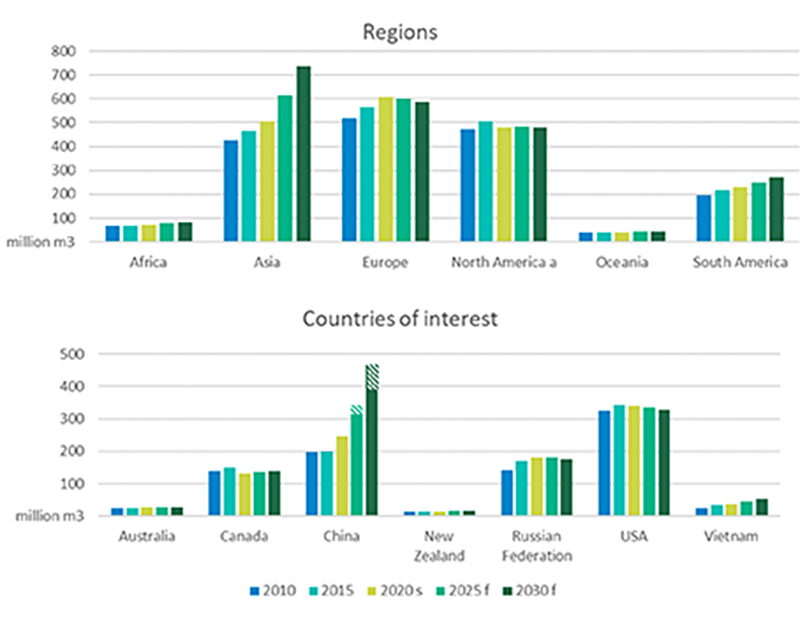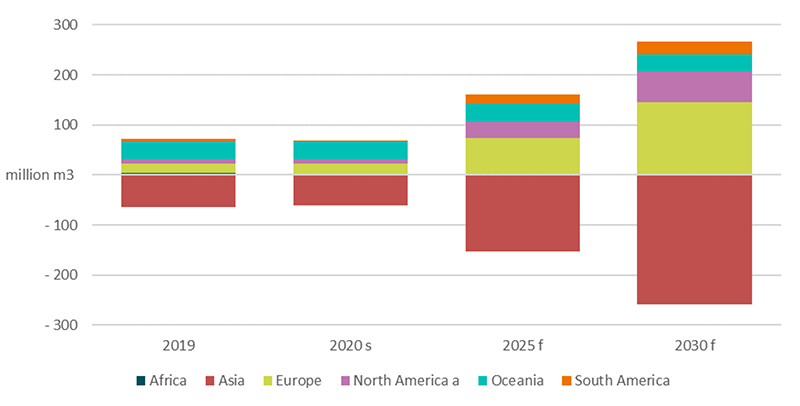Authors: Peter Lock, Peter Legg, Linden Whittle and Stephanie Black
Summary
This report presents an outlook on the availability of and demand for raw wood fibres by geographic region and country.
International trade in wood products has become increasingly important over the past 30 years. Global wood products trade increased 143% to US$244 billion between 1990 and 2019 (FAO 2021). The largest contributor to this expansion in trade has been economic growth and demand from China with imports of wood products to China increasing 760% to US$49 billion (FAO 2021).
Responding to global market forces, the Australian forest sector has become increasingly internationally focused, with trade increasing strongly in recent years. Roughly half of all logs harvested in Australia were exported either as roundwood or woodchips in 2019. As a proportion of domestic log production, Australia has one of the most trade exposed forestry sectors in the world. Consequently, future changes in global trade flows, and regional and country level trade balances will have significant implications for Australia’s forestry sector.
Key findings
- Global consumption of roundwood is likely to increase by about 10% to 2.2 billion cubic metres by 2030, supported by strong economic and population growth in Asia. Similarly, woodchip consumption is also expected to increase by about 40% to 350 million cubic metres by 2030.
- Globally, the sustainable harvest of existing wood fibre resources is expected to be sufficient to meet rising global consumption out to 2030, with wood prices increasing modestly at a rate of 1% annually in nominal terms.
- Large shifts towards imports of roundwood and woodchips in Asia is expected by 2030 as the sustainable yield of local supplies reach capacity. It is expected that these imports will be supplied by producers in Europe and North America, increasing the amount of interregional trade in global wood markets.
- Roundwood production and exports from Australia and New Zealand are expected to be stable and remain constrained by the sustainable yield of existing forest resources.
Figure 28 - Projected consumption trend for roundwood, by region and countries of interest, 2010 to 2030 f
Source: ABARES; FAO, 2021a.
Figure 36 The growing roundwood production deficit in Asia from 2020 s to 2030 f, is expected to be met by increased roundwood exports from Europe and North America
Download the full report
Global Outlook for Wood Markets to 2030: Projections of future production, consumption and trade balance- MS Word [1.54 MB]
Global Outlook for Wood Markets to 2030: Projections of future production, consumption and trade balance- PDF [1.64 MB]


